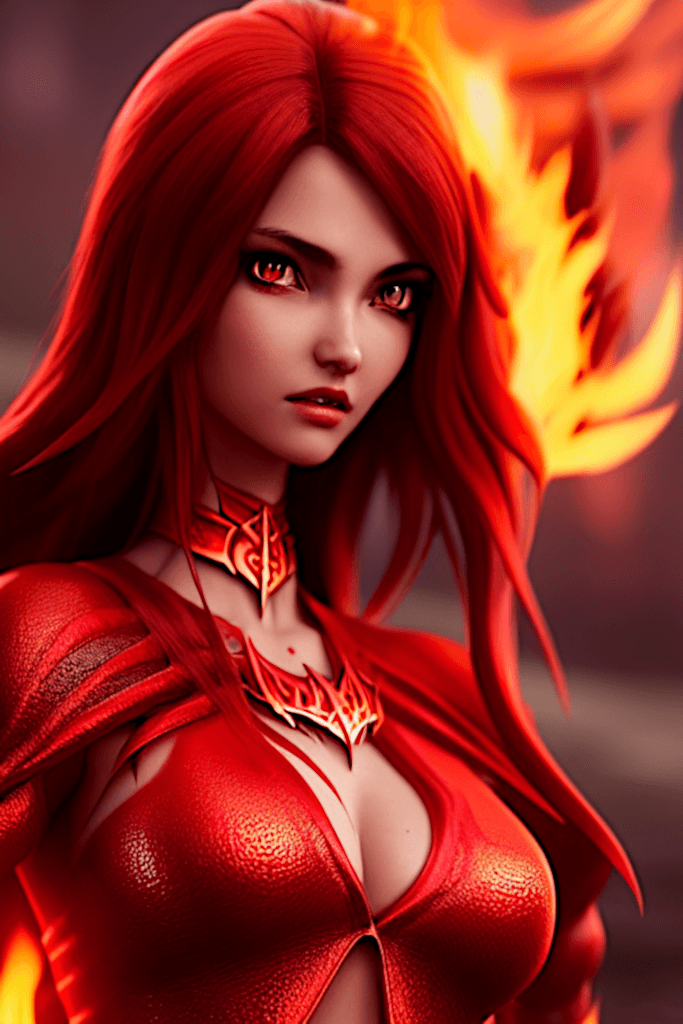Myths and Symbols
In Mesopotamian mythology, Ereshkigal was the queen of the underworld and was often depicted as a fierce and powerful goddess. She was associated with death, disease, and the spirits of the dead. According to myth, Ereshkigal ruled over the underworld, a dark and gloomy place where the spirits of the dead resided. Her realm was guarded by the gatekeeper, Namtar, who ensured that the spirits of the dead did not escape.
Ereshkigal was often depicted with snakes or dragons, which were seen as creatures associated with the underworld. She was also sometimes depicted with a horned headdress, which symbolized her power and authority. In some depictions, Ereshkigal was shown holding a staff or scepter, which was a symbol of her power over the spirits of the dead.
Role in Mesopotamian Mythology
Ereshkigal played an important role in Mesopotamian mythology as the ruler of the underworld. According to one myth, Ereshkigal’s husband Nergal was sent to the underworld as a punishment for his arrogance. While there, he met and fell in love with Ereshkigal, and they became husband and wife. Together, they ruled over the underworld, and their union was seen as a symbol of the balance between life and death.
Ereshkigal was also associated with the goddess Ishtar, who was the goddess of love and fertility. In one myth, Ishtar descended to the underworld to rescue her lover Tammuz, who had been killed and taken to the underworld. However, when Ishtar arrived, she was forced to undergo a series of trials and was eventually killed by Ereshkigal. Ishtar’s descent to the underworld and her subsequent resurrection were seen as symbolic of the cycle of life and death.
Legacy and Influence
Ereshkigal’s legacy can still be seen in modern culture, where she has been the inspiration for many works of art and literature. Her association with death and the underworld has made her a popular figure in horror and dark fantasy genres. In addition, Ereshkigal’s symbolism has been adopted by various feminist movements, who see her as a symbol of feminine power and resistance.
Ereshkigal was often depicted as a fierce and powerful goddess, but her beauty was also noted in some depictions. She was sometimes portrayed with long, flowing hair and adorned with jewelry, which emphasized her status as a powerful queen. Despite her association with death and the underworld, Ereshkigal’s beauty and regal demeanor were recognized and appreciated in ancient Mesopotamian culture.
Amazing Nft For Sell 55b214d42e9 Related Posts
 Amazing Nft For Sell C2ef4b895c174Green Elf See if it's still available on OpenSea The …
Amazing Nft For Sell C2ef4b895c174Green Elf See if it's still available on OpenSea The … Amazing Nft For Sell 29533949635388IwIw See if it's still available on OpenSea “IwIw” is …
Amazing Nft For Sell 29533949635388IwIw See if it's still available on OpenSea “IwIw” is … Amazing Nft For Sell 79bac03d4f5Cartoon Avatar 005 See if it's still available on OpenSea …
Amazing Nft For Sell 79bac03d4f5Cartoon Avatar 005 See if it's still available on OpenSea … Amazing Nft For Sell C2ef4b895c176Lylith See if it's still available on OpenSea The NFTs …
Amazing Nft For Sell C2ef4b895c176Lylith See if it's still available on OpenSea The NFTs … Amazing Nft For Sell B67b0e7c4f8See if it's still available on OpenSea Dryads, the nymphs …
Amazing Nft For Sell B67b0e7c4f8See if it's still available on OpenSea Dryads, the nymphs … Batibat – Amazing Nft For Sell 29533949632360Batibat See if it's still available on OpenSea Batibat is …
Batibat – Amazing Nft For Sell 29533949632360Batibat See if it's still available on OpenSea Batibat is …

